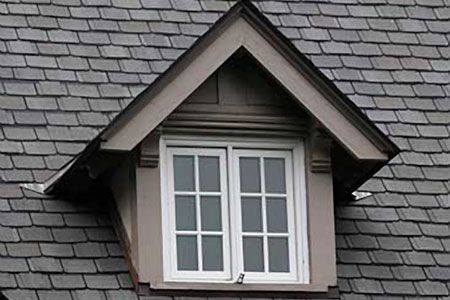Dormer windows are a charming architectural feature that can transform your home’s look. These roof projections not only add visual interest to your house’s exterior but also create additional living space and natural light inside. In this guide, we’ll explore various dormer window styles and how they can enhance your home’s aesthetics and value.
What Is a Dormer Window?
A dormer window is a structural element that protrudes from a sloped roof, creating additional headroom and usable space in the upper floors of a home. These windows serve multiple purposes, including improving natural light, increasing ventilation, and enhancing the overall aesthetics of a building. Dormer windows are particularly useful in attic spaces, where they can turn a cramped area into a functional living space.
Dormer windows come in various styles, each offering unique benefits and architectural appeal. From traditional gabled dormers to more modern shed dormers, these features can significantly impact your home’s curb appeal and interior comfort. Understanding the options available can help you make an informed dormer window decision suited to your home’s design and your personal taste.
Double Hung Dormer Windows

Double-hung windows are a popular choice for dormer installations. These windows feature two sashes that move up and down independently, allowing for excellent ventilation control. In this example, we see a pair of double-hung windows nestled within a dormer, complementing the slate roof’s classic appearance.
By opening both the top and bottom sashes, you can create a natural airflow that helps push hot air out through the top while drawing cooler air in from the bottom. This design not only improves comfort but can also help reduce energy costs during warmer months. Additionally, the charm of double-hung windows adds subtle character and sophistication to your home’s exterior, making them a timeless choice for many homeowners.
Multiple Pane Dormer Windows
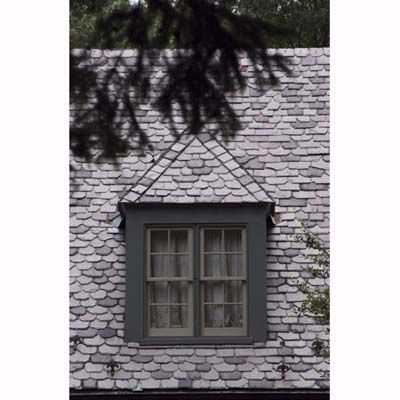
Multiple-pane windows add a touch of timeless elegance to dormer designs. These windows feature several small glass panes, often referred to as “lights,” which create a charming, historical aesthetic. While originally a necessity due to limitations in glass manufacturing, multiple-pane windows have become a sought-after design element in both traditional and contemporary homes.
The appeal of multiple-pane windows lies in their ability to add visual interest and character to a space. They create a warm, inviting atmosphere and can help maintain the architectural integrity of older homes. However, due to the increased number of glass divisions, these windows require more maintenance and cleaning. The intricate design can make them more challenging to clean, but it pays off with unique aesthetic appeal.
Curved Top Dormer Windows
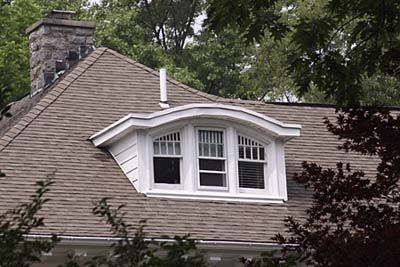
Curved-top windows are a hallmark of eyebrow dormers, which feature a graceful, arched roofline. These windows follow the dormer’s curved shape, creating a soft, elegant look that can add a touch of sophistication to your home’s exterior. The example shown here showcases three double-hung windows with a curved top, emphasizing the eyebrow dormer’s unique shape.
Using smaller panes along the curved section of the window adds visual interest and allows for greater flexibility in following the dormer’s contours. This design choice can create beautiful light patterns inside the room, adding to the overall ambiance of the space. The gentle curve can also introduce a subtle architectural element that softens the strict lines often associated with traditional dormer windows.
Casement Dormer Windows
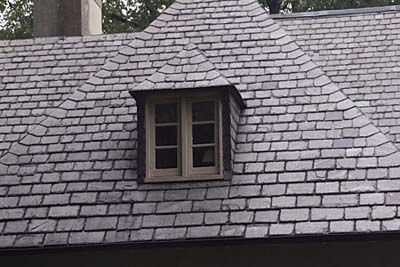
Casement windows offer a different approach to dormer design, swinging outward like a door rather than sliding up and down. This style provides excellent ventilation, as the entire window opening can be utilized when the window is open. Casement windows are also known for their tight seal when closed, making them an energy-efficient choice for dormer installations.
The simplicity of casement windows lends itself well to cottage-style homes or those seeking a more minimalist aesthetic. Their clean lines and unobstructed views can create a sense of openness in smaller dormer spaces, making them feel larger and more inviting. Additionally, their functionality and ease of operation make them a practical choice for various architectural settings.
Leaded Dormer Windows
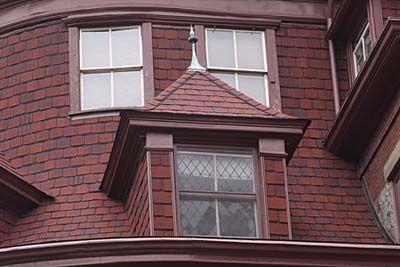
Leaded glass windows in dormers offer a unique, artistic touch to your home. These windows feature small panes of glass held together by strips of lead, creating intricate patterns and designs. While traditional leaded glass windows once required separate storm windows for insulation, modern versions often incorporate double-pane technology for improved energy efficiency.
The beauty of leaded glass lies in its ability to filter light in interesting ways, creating ever-changing patterns throughout the day. This can add a dynamic element to your interior spaces, enhancing the overall ambiance of the room. The classic appeal of leaded glass also adds a historic feel to your home’s exterior, connecting it to architectural traditions of the past.
Mullioned Dormer Windows
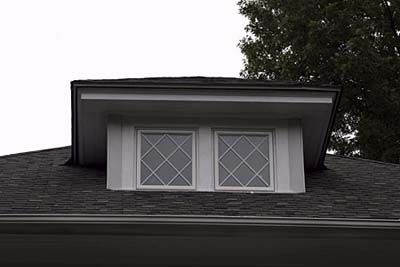
Mullioned windows offer a classic look that can complement various architectural styles. There are three main approaches to creating the appearance of diamond-shaped panes in dormer windows:
- Traditional leaded glass construction
- Wooden or metal frames (mullions or muntins) separating individual panes
- Large-pane windows with decorative grills applied to the surface
The choice often depends on the homeowner’s preferences, budget, and the overall style of the house. The addition of mullions can make a standard window look more intricate and detailed, adding a touch of elegance and refinement to the space.
Palladian Dormer Windows
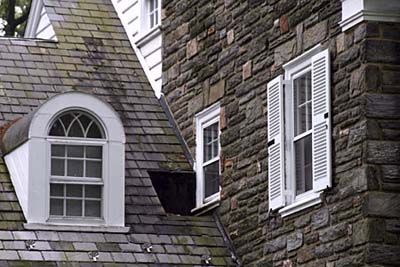
Palladian windows, named after the Italian architect Andrea Palladio, are a perfect fit for arched-top dormers. These elegant windows typically feature a large, arched central pane flanked by two narrower, rectangular side panes. The curved top of a Palladian window naturally follows the roofline of an arched dormer, creating a harmonious and visually striking effect.
Originating in the 18th century, Palladian windows became popular in the U.S. as part of a broader architectural movement that sought to incorporate classical European design elements. Their timeless appeal continues to make them a favored choice for homeowners looking to add a touch of sophistication to their dormer designs.
Pedimented Palladian Dormer Windows
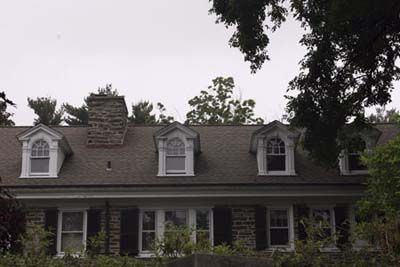
Pedimented Palladian windows take the classic Palladian design a step further by incorporating additional architectural elements. These windows are often framed by decorative molding that mimics the appearance of columns supporting a pediment (the triangular section above the window). This style is particularly well-suited to homes with a strong classical or neoclassical influence.
The pedimented Palladian window shown here features large panes of glass, indicating that it’s a more modern interpretation of the style. This combination of classical design with contemporary materials demonstrates how dormer windows can bridge different architectural eras, creating a unique and personalized look for your home. Such windows don’t just add illumination but also provide a remarkable and regal touch to the overall structure.
Half-Round Dormer Windows
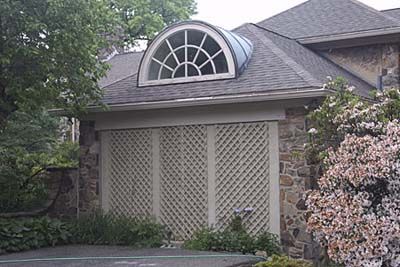
Half-round windows are a versatile option for dormer designs, particularly in eyebrow dormers. These windows can incorporate elements of Palladian style while maintaining a simpler, more streamlined appearance. The absence of side walls in eyebrow dormers allows the half-round window to become a focal point, drawing the eye and adding visual interest to the roofline.
While many eyebrow dormers feature roofs that curve upward at the ends, this is not a requirement of the style. As seen in this example, a clean, symmetrical half-round window can create a striking effect even without the characteristic upward curve. This flexibility in design makes half-round windows suitable for both traditional and modern architectural styles.
Arched Top Dormer Windows
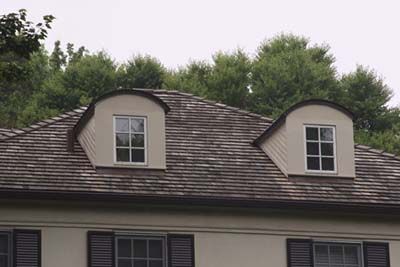
Arched-top dormers don’t always require curved windows. As shown in this example, rectangular windows can be effectively used in arched dormers, creating an interesting contrast between the straight lines of the window and the curve of the dormer roof. This approach can be particularly useful when the dormers are primarily decorative or designed to bring light into a vaulted ceiling space.
The use of fixed windows in this instance suggests that these dormers may serve a primarily aesthetic function or are focused on maximizing natural light rather than ventilation. This demonstrates the flexibility of dormer designs in meeting various architectural and functional needs. The merging of different shapes and styles in one feature adds depth and uniqueness to your home’s exterior.
